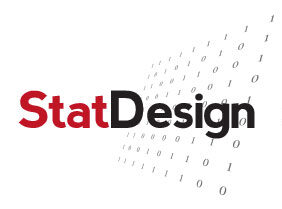Choice Modeling
StatDesign specializes in the design and analysis of discrete choice experiments. We work with you to provide a customized solution to your research questions. With decades of experience in customizable experimental designs, we will help you determine the right choice tool for your project and execute from design through analysis. The final output is an easy to use excel-based choice simulator, called a Decision Support System (DSS).
Discrete Choice is an approach used to understand, quantify, and predict consumer choice behavior in competitive markets. This approach is based on a rigorous and well-tested theory of consumer choice behavior known as random utility theory (McFadden, 1974). The choice methodology is derived from econometrics, cognitive psychology, and experimental design. With this approach, we mimic shopping experiences, asking respondents to make decisions among various products or services described by their features and prices. Using Aggregate Logit or HB respondent level modeling approaches, we model what drives consumer choices.
The key output of discrete choice is a Decision Support System (DSS). The DSS combines the best of traditional trade-off methods with the modeling of choices and easy-to-use decision support software. The excel-based DSS allows managers to quickly and easily change the values of any attributes included in the choice model and obtain predicted change in share and demand resulting from that action. The DSS can be a powerful tool for defining the optimal product configuration and pricing, especially when combined with cost utilization considerations.
MaxDiff TURF
A growing number of StatDesign’s clients have recognized the need for MaxDiff experiments. MaxDiff provides an attractive alternative to rating scales, rankings, point/chip allocations, and paired comparisons. The maximum difference task for the respondent is simple. The respondent is asked to select the one BEST item in a choice set and the one WORST item in a choice set on a particular dimension (most appealing, most important, etc.). The respondent will repeat this task several times, each time with a different set of items.
StatDesign uses MaxDiff response data as inputs for TURF analysis. TURF stands for “total unduplicated reach and frequency.” It is an optimization approach for finding a subset of items that "reach" the maximum number of respondents possible.
The output of the MaxDiff experiment is an interval scale of each of the items tested, allowing decision-makers to understand not only the rank order but also the distance between each of the ranks. When appropriate, StatDesign anchors the MaxDiff results to other questions in the survey to provide greater depth of information.
The output of the TURF analysis is the top combinations of 2 to X items that optimize “reach” and an easy-to-use excel-based TURF simulator.

